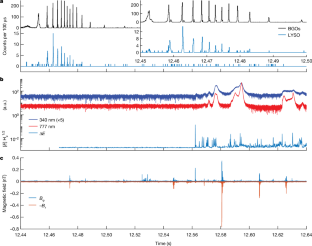2024-10-02 NASA
<関連情報>
- https://www.nasa.gov/missions/tess/nasas-tess-spots-record-breaking-stellar-triplets/
- https://iopscience.iop.org/article/10.3847/1538-4357/ad7368
TIC 290061484: 最短の外周周期24.5日を持つ三食三重星系 TIC 290061484: A Triply Eclipsing Triple System with the Shortest Known Outer Period of 24.5 Days
V. B. Kostov, S. A. Rappaport, T. Borkovits, B. P. Powell, R. Gagliano, M. Omohundro, I. B. Bíró, M. Moe, S. B. Howell, T. Mitnyan,…
The Astrophysical Journal Published: 2024 October 2
DOI:10.3847/1538-4357/ad7368

Abstract
We have discovered a triply eclipsing triple-star system, TIC 290061484, with the shortest known outer period, Pout, of only 24.5 days. This “eclipses” the previous record set by λ Tauri at 33.02 days, which held for 68 yr. The inner binary, with an orbital period of Pin = 1.8 days, produces primary and secondary eclipses and exhibits prominent eclipse timing variations with the same periodicity as the outer orbit. The tertiary star eclipses, and is eclipsed by, the inner binary with pronounced asymmetric profiles. The inclinations of both orbits evolve on observable timescales such that the third-body eclipses exhibit dramatic depth variations in TESS data. A photodynamical model provides a complete solution for all orbital and physical parameters of the triple system, showing that the three stars have masses of 6.85, 6.11, and 7.90 M⊙, radii near those corresponding to the main sequence, and Teff in the range of 21,000–23,700 K. Remarkably, the model shows that the triple is in fact a subsystem of a hierarchical 2+1+1 quadruple with a distant fourth star. The outermost star has a period of ∼3200 days and a mass comparable to the stars in the inner triple. In ∼20 Myr, all three components of the triple subsystem will merge, undergo a Type II supernova explosion, and leave a single remnant neutron star. At the time of writing, TIC 290061484 is the most compact triple system and one of the tighter known compact triples (i.e., Pout/Pin = 13.7).


